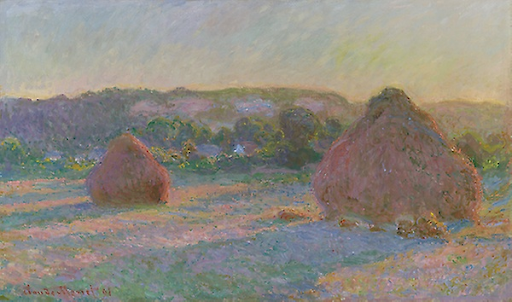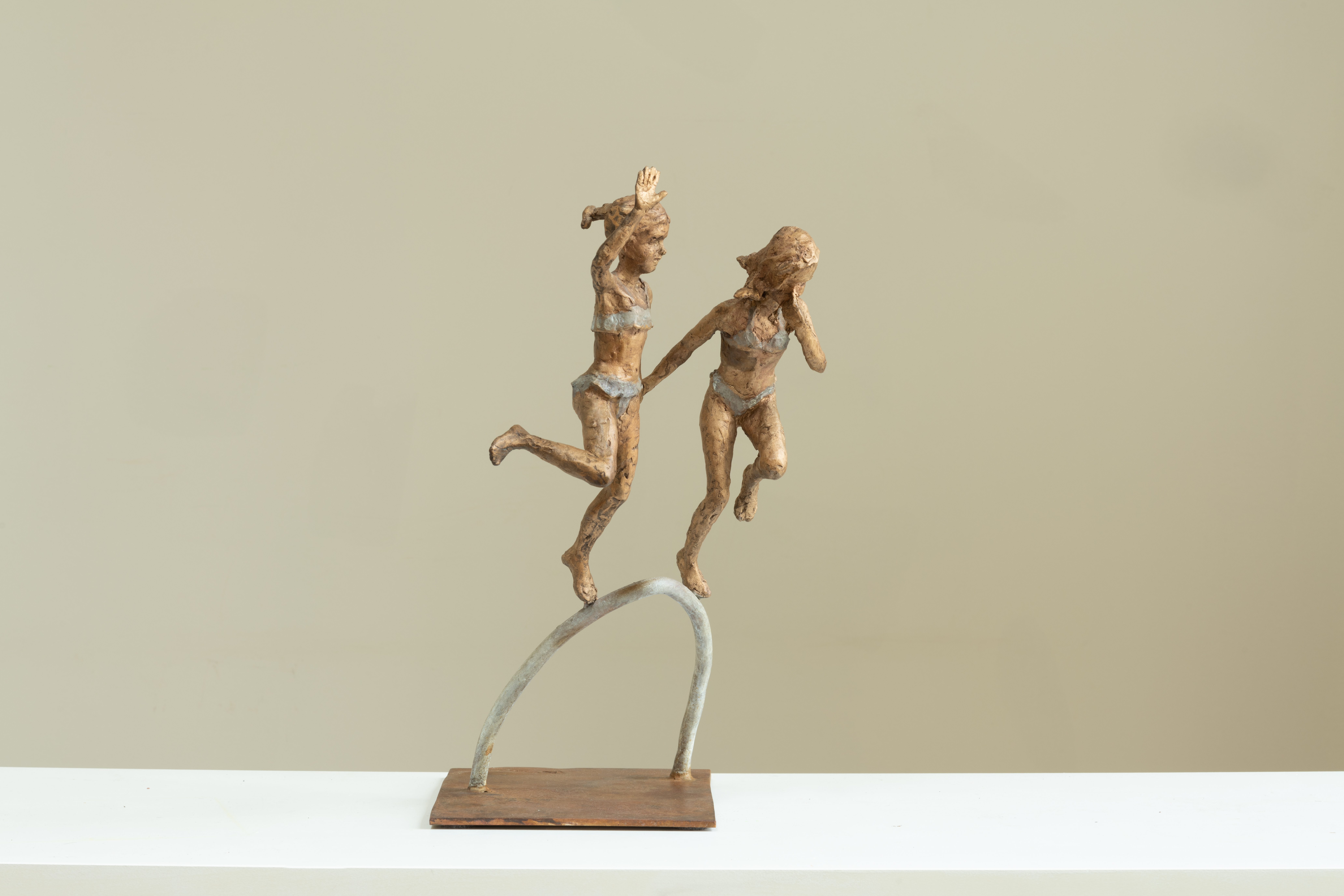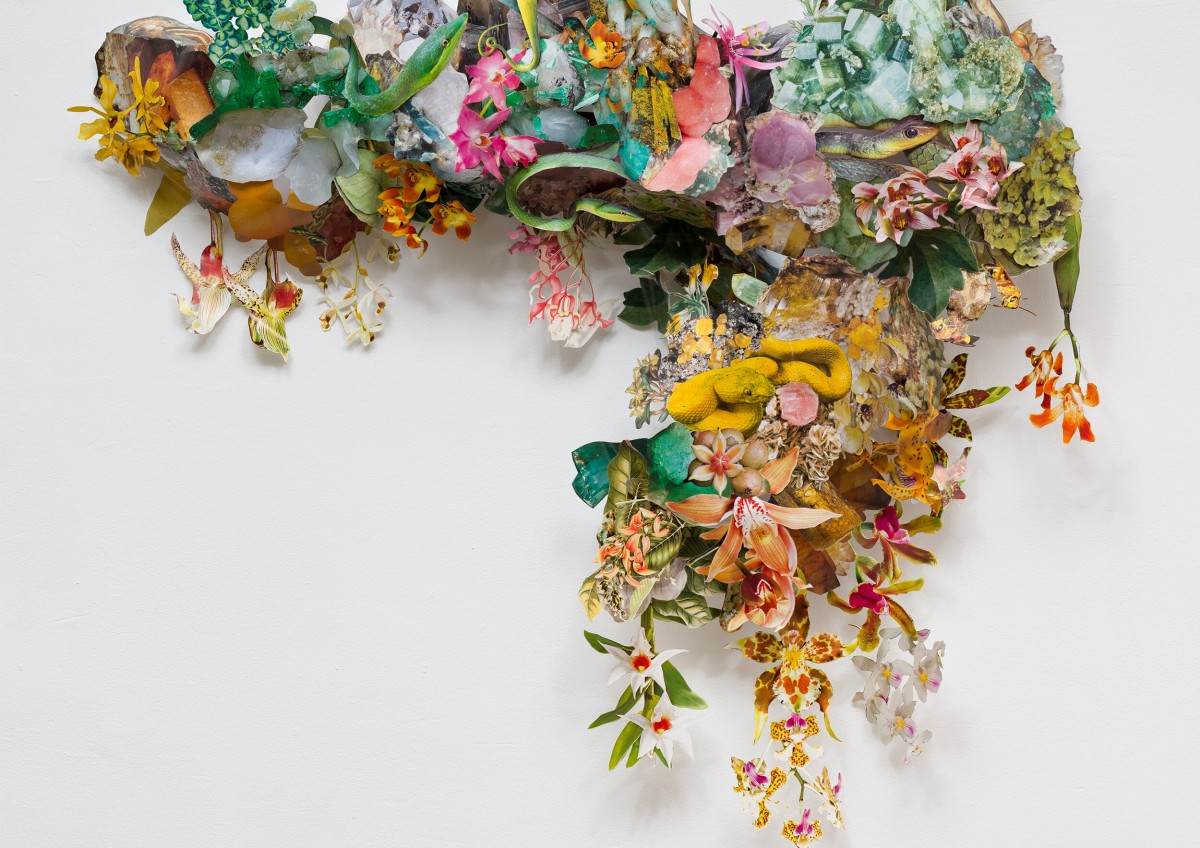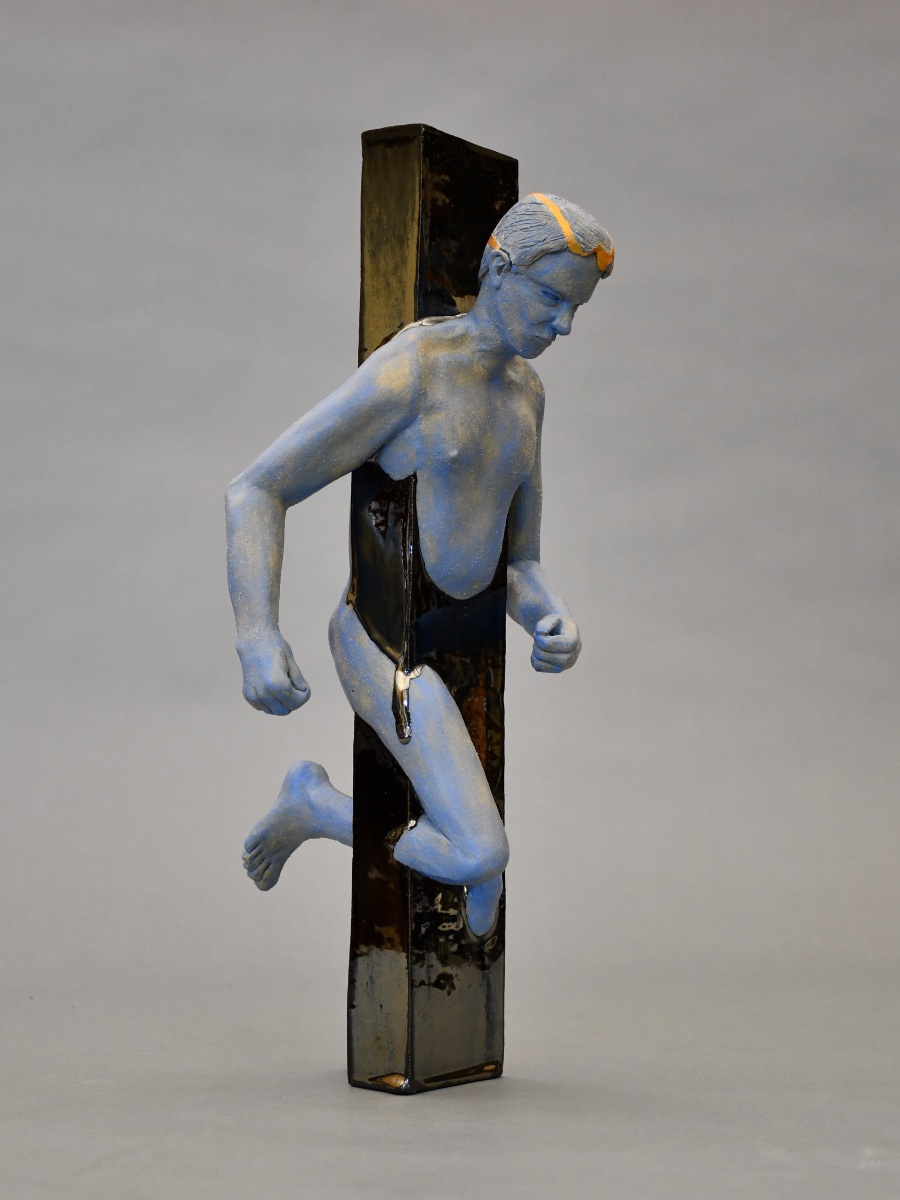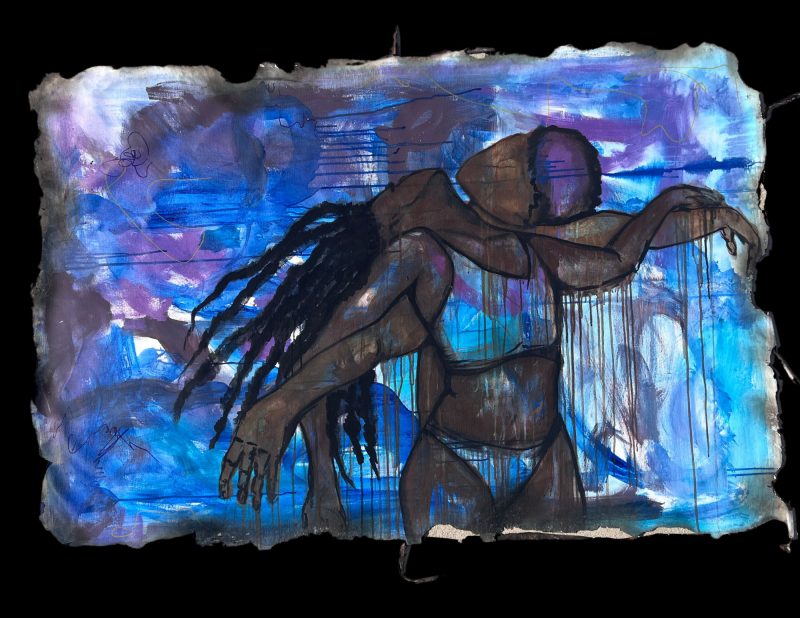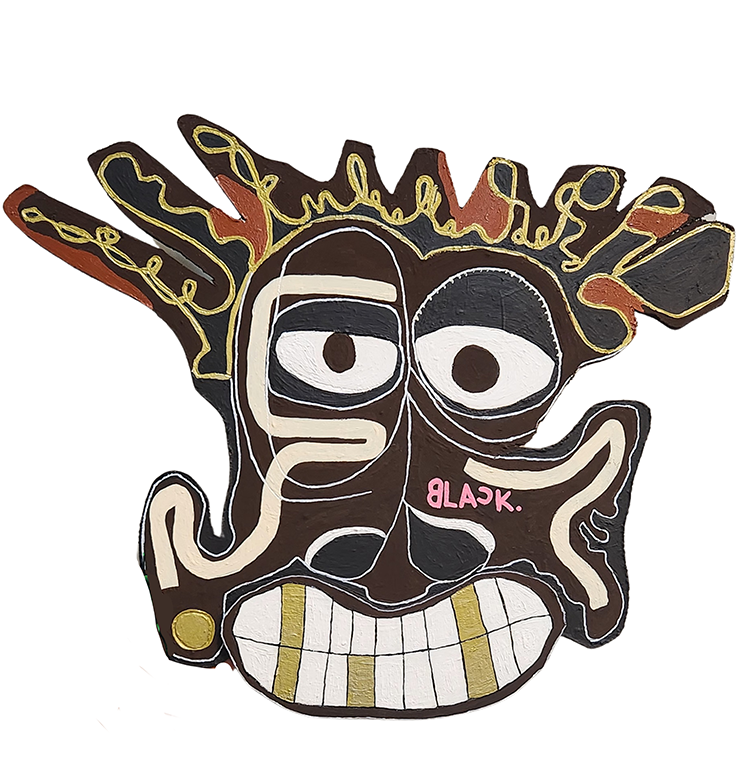Art Institute of Chicago
Through June 14, 2021
When Monet’s paintings first appeared alongside his contemporaries’ in a Chicago gallery in 1888, he was singled out and praised by the press. And when his works were shown in the city again as part of the last Inter-State Industrial Exposition in Chicago (also known as the “American Salon”) in 1890, they not only captured the eye of local collectors—they ignited a collective passion.
In 1891, Bertha and Potter Palmer acquired 20 paintings by Monet—including several from the Stacks of Wheat series. That same year, Martin A. Ryerson, who served as a trustee and eventual vice-president of the Art Institute, bought his first of many paintings by the artist. As president of the Board of Lady Managers for the 1893 World’s Columbian Exposition, Bertha oversaw the creation of the Woman’s Building. The international fair, which featured an exhibition of 129 works from American private collections, including four paintings by Monet, showcased a city still reimagining itself after the Great Fire of 1871 and one eager to embrace not only the technology but the aesthetics of modernity.
Inspired by these influential tastemakers, private groups and collectors eagerly followed their lead. In 1895, the Union League Club of Chicago purchased Apple Trees in Blossom (1872), which was also shown at the Art Institute that year in the exhibition 20 Works by Claude Monet, the artist’s first solo show at a museum in the United States. In 1903, the Art Institute became the first American museum to purchase one of Monet’s paintings and in the decades that followed, the museum’s collection grew thanks to generous gifts from several donors, including Annie Coburn, former two-time Chicago Mayor Carter Harrison Jr., the Searle family, and others. In keeping with the theme of firsts, Monet and Chicago is the first exhibition to explore Chicago’s pioneering connection to the great Impressionist artist.
Today, the museum’s 33 paintings and 13 drawings constitute the largest collection of works by the artist outside of Paris. Among the more than 70 paintings in the exhibition—from the Art Institute’s exemplary holdings and esteemed Chicago-based collections—are beloved major works as well as rarely seen still lifes, figural scenes, seascapes, and landscapes, spanning his long career from early caricatures made at Le Havre to the last splendid canvases inspired by his garden and water lily pond at Giverny. Monet and Chicago also benefits from new art-historical research and in-depth scientific study of his materials and techniques and offers an opportunity to look more closely at the artist’s oeuvre through our ever-advancing understanding of his creative process.

